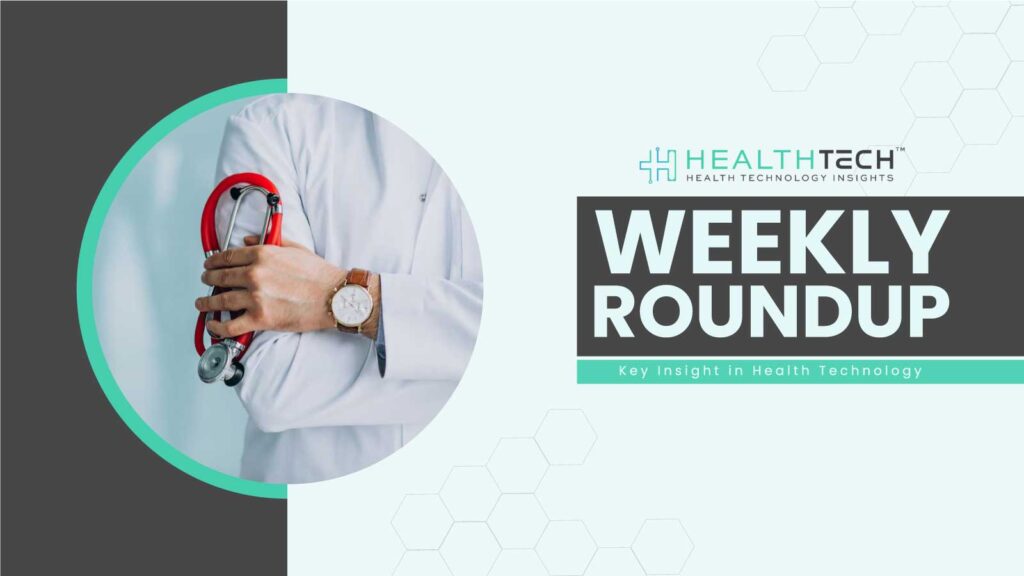Imagine a healthcare system that prevents illness before it begins. Today, this vision is becoming reality thanks to AI-powered medical devices, often referred to as the “invisible doctor.” These technologies are enabling continuous health monitoring, early disease detection, and data-driven decision-making. For U.S.-based healthtech leaders and changemakers, AI devices represent a vital evolution in preventive care that is already transforming clinical workflows and patient outcomes.
As preventive medicine takes center stage, AI-enabled devices are improving accuracy, personalizing treatment, and reducing the long-term burden on healthcare infrastructure.
Why Preventive Healthcare Needs an AI Upgrade
Preventive care has traditionally relied on routine checkups and lifestyle advice. But this model often lacks the precision and timeliness needed to detect early risk factors. AI changes the equation by using real-time data to identify early patterns before symptoms appear.
According to the CDC, 90% of the nation’s $4.1 trillion annual healthcare expenditures go toward chronic and mental health conditions, many of which are preventable with early intervention. The economic and health impact of prevention is significant.
AI enhances this by:
- Analyzing health data at scale.
- Detecting deviations from normal vitals.
- Predicting disease likelihood with machine learning models.
These benefits make AI a key enabler of proactive and personalized care.
Real-World Devices Making an Impact
AI-powered preventive devices come in many forms, from wearables to at-home diagnostic tools. Here are several transformative examples:
1. AI-Enhanced Wearables
Devices like the Apple Watch and Fitbit now include advanced health sensors capable of ECG, blood oxygen, and heart rate variability monitoring. Apple’s Heart Study with Stanford found that wearable devices accurately identified irregular heart rhythms in 84% of participants alerted by the device. These alerts allow users to consult physicians early, helping prevent serious cardiac events.
2. Smart Patches and Biosensors
Companies like BioIntelliSense have introduced continuous health monitoring patches. Their FDA-cleared BioSticker tracks skin temperature, respiratory rate, and resting heart rate to detect early signs of infection or deterioration. This real-time surveillance reduces unnecessary hospital visits and supports remote patient care.
3. AI-Driven Cancer Screening Tools
Digital pathology and AI algorithms can now detect early-stage cancers with high accuracy. Paige.AI, for instance, received FDA breakthrough designation for its AI model that aids pathologists in diagnosing prostate cancer more efficiently. A study published in The Lancet Digital Health showed 94.3% accuracy in detection when combined with expert analysis.
U.S. Market Trends and Predictions
The U.S. preventive healthcare AI market is expected to grow significantly. According to Grand View Research, the global AI healthcare market is projected to reach $187.95 billion by 2030, with preventive applications leading the way.
Key trends shaping the U.S. industry include:
- Widespread adoption of remote patient monitoring (RPM): By 2024, over 30 million U.S. patients are expected to use RPM tools, according to Insider Intelligence.
- Policy support and reimbursement expansion: CMS has expanded coverage for RPM and remote therapeutic monitoring, encouraging provider adoption.
- Investment growth: Healthtech funding in AI and diagnostics surpassed $7 billion in 2023, as reported by Rock Health.
These trends reflect a strategic shift toward prevention-first healthcare delivery models.
AI and Public Health: Preventing at Scale
AI’s utility in preventive care extends beyond individual devices to population health management. In North Carolina, the Department of Health and Human Services partnered with IBM Watson to identify communities at higher risk of chronic conditions.
By analyzing Medicaid data, AI models flagged early indicators of diabetes and hypertension, allowing for tailored community outreach programs.
This population-level targeting enhances efficiency and equity in healthcare access.
“The next big breakthrough in healthcare won’t be a new drug. It will be algorithms that prevent illness altogether,” said Vinod Khosla, Tech Entrepreneur and Healthcare Investor.
How Providers Are Adopting AI Devices
The use of AI-based medical devices is no longer confined to pilot schemes or academic pilots. Healthcare professionals in the U.S. are incorporating these technologies into day-to-day clinical routines to optimize preventive care.
From the early identification of risks to ongoing post-treatment tracking, AI devices are enabling clinicians to make quicker, more data-driven decisions. These solutions are streamlining operations and providing patients with a more proactive and personalized experience of healthcare.
Healthcare systems across the U.S. are embedding AI into routine practice:
- Mayo Clinic uses AI tools for predictive analytics to monitor patient deterioration post-discharge.
- Mount Sinai Health System deploys AI-powered wearables for post-op recovery and early complication alerts.
- Kaiser Permanente integrates smart watches and mobile health platforms for chronic disease prevention.
Clinicians report increased efficiency, better patient engagement, and improved outcomes as a result.
The Patient Experience: Empowered and Informed
AI devices also shift control to patients. Personalized alerts and health dashboards promote self-awareness and healthy habits. A 2023 survey by Accenture found that 66% of U.S. patients using AI health tools reported feeling more in control of their health.
When patients are equipped with data, they can make informed lifestyle decisions, often avoiding the need for intensive interventions later.
What’s Next: Predictions for the Next 5 Years
- Hyper-personalized AI diagnostics: Devices will use genetic, lifestyle, and environmental data to deliver precision prevention plans.
- Integration with smart home ecosystems: Voice assistants and home sensors will connect with AI health platforms for seamless monitoring.
- AI-driven early mental health detection: Wearables will soon detect mood shifts and offer early cognitive behavioral guidance.
A notable example of AI’s transformative potential is China’s “Agent Hospital,” developed by Tsinghua University. This fully AI-powered virtual hospital operates autonomously, with 14 AI doctors and four AI nurses capable of diagnosing and treating thousands of patients daily.
According to Medium, the system has achieved a 93.06% accuracy rate on the MedQA dataset, surpassing human performance in certain areas. Such advancements underscore AI’s role in enhancing healthcare efficiency and accessibility.
These advancements will expand AI’s role beyond physical health to holistic preventive care.
Redefining Prevention with the Invisible Doctor
AI-based medical devices are the present tools that are speeding preventive medicine’s transformation. From predictive analytics to real-time monitoring, the intangible physician is enabling healthcare systems to make the transition from treatment to prevention, enhancing results while lowering long-term expenses.
For healthtech executives and policymakers, the way forward is unambiguous: investing in AI-enabled innovation is not only a strategic imperative. It’s a mission-critical imperative to build healthier communities, empower patients, and realize the full potential of preventive care.
The invisible doctor has arrived, quietly toiling behind the scenes, making healthcare smarter, faster, and more human-focused than ever before.
FAQs
1. How are AI-powered medical devices enhancing preventive healthcare in the U.S.?
AI-powered medical devices enable continuous monitoring and early detection of health issues by analyzing real-time data. For instance, wearable devices can track vital signs and alert users to irregularities, facilitating timely medical interventions. This proactive approach helps in reducing the incidence of chronic diseases and lowers healthcare costs.
2. What are the key considerations for integrating AI devices into existing healthcare systems?
Integration requires ensuring interoperability with current electronic health records (EHRs), maintaining data privacy and security, and providing adequate training for healthcare professionals. It’s also essential to establish clear protocols for data management and to ensure compliance with regulatory standards.
3. How is the FDA facilitating the approval of AI-driven medical devices?
The FDA has introduced guidelines to streamline the approval process for AI-based medical devices. Specifically, these guidelines allow for modifications and updates to AI algorithms without the need for reapproval, provided they meet specific safety and efficacy criteria.
4. What role do AI devices play in addressing healthcare disparities in underserved communities?
AI devices can bridge gaps in healthcare access by enabling remote monitoring and telehealth services. Moreover, they allow for early detection and management of health conditions in communities with limited access to traditional healthcare facilities. As a result, they improve health outcomes and reduce disparities.
5. What future developments are expected in AI-powered preventive healthcare?
Future advancements include the integration of AI with genomics for personalized medicine, the use of AI in mental health monitoring through wearable devices, and the development of more sophisticated predictive analytics tools. These innovations aim to further enhance the precision and effectiveness of preventive healthcare strategies.
To participate in our interviews, please write to our HealthTech Media Room at sudipto@intentamplify.com






